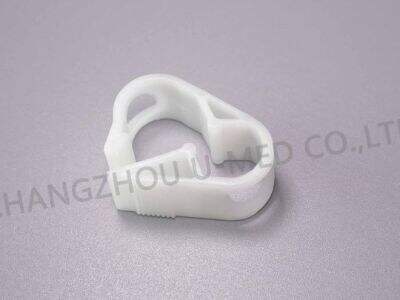Quels sont les composants critiques d'une canule IV standard ?
Dans les hôpitaux et les sites médicaux, les professionnels de la santé administrent des médicaments ou des fluides directement dans le sang d'un patient à l'aide d'une petite canule en plastique appelée canule IV. Ces canules IV sont disponibles dans une gamme de tailles et de matériaux, toutes conçues pour être sûres et confortables. Examinons maintenant les éléments clés d'une canule IV typique pour mieux comprendre son fonctionnement et son importance.
Le choix de la taille et du calibre corrects de la sonde IV est le plus crucial pour un traitement réussi.
Les sondes IV sont disponibles en différentes tailles, classées par calibre. Ces nombres varient du grand (14 ou 16 calibre) au très petit (24 ou 26 calibre). Plus le nombre de calibre est petit, plus la tube est grand. Choisir la bonne taille garantit que les médicaments et les fluides circulent sans problème et que le patient est à l'aise pendant l'insertion.
Le matériau de construction des sondes IV est également important pour la sécurité et le confort des patients. La majorité des Cannule IV sont fabriquées en plastiques, tels que le polyuréthane ou le silicone. Ceux-ci sont doux et non irritants et ne provoquent pas d'irritation ou de réactions allergiques sur la peau et les veines du patient. Certaines sondes IV sont même recouvertes d'héparine ou de sérum physiologique pour prévenir les caillots et maintenir le tube ouvert plus longtemps.
Avantages
Fonctionnalités de sécurité importantes telles que les protecteurs de aiguilles et les chambres à flash, en plus d'aider le personnel soignant à protéger à la fois eux-mêmes et les patients des blessures. Les protecteurs de aiguilles sont des couvre-aiguilles spéciaux qui se placent sur l'embout après l'introduction de l'aiguille, pour éviter les piqures accidentelles. Les chambres à flash sont des zones transparentes sur la canule qui permettent aux professionnels de santé de voir le retour de sang, indiquant que l' cannule iv est à l'intérieur de la veine. Ces fonctionnalités de sécurité aident à prévenir les blessures et les infections, créant ainsi un environnement de soins de santé plus sûr.
Avantages
Pensez à la manière dont cela fonctionne avec les canules IV, les tubulures et les appareils d'infusion. Lors de leur connexion aux machines d'infusion, il est important d'assembler correctement la canule IV avec le tubage IV. De tels assemblages sont sécurisés et sans fuite. D'autres cathéters IV ont également des ailes ou des tubulures d'extension pour faciliter l'attache à l'appareil. Le personnel soignant peut contribuer à un traitement fluide et minimiser les erreurs en choisissant le bon matériel. taille de canule veineuse .

 EN
EN
 AR
AR BG
BG HR
HR CS
CS DA
DA NL
NL FI
FI FR
FR DE
DE EL
EL HI
HI IT
IT JA
JA KO
KO NO
NO PL
PL PT
PT RO
RO RU
RU ES
ES SV
SV TL
TL ID
ID LT
LT UK
UK VI
VI HU
HU TH
TH TR
TR AF
AF MS
MS GA
GA HY
HY BN
BN LO
LO LA
LA NE
NE KK
KK